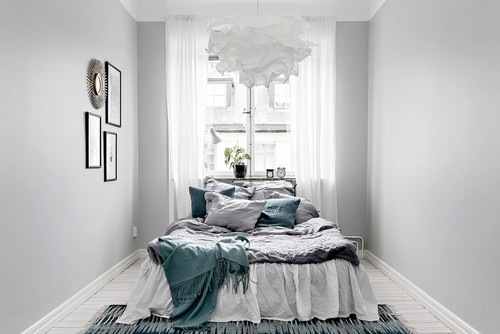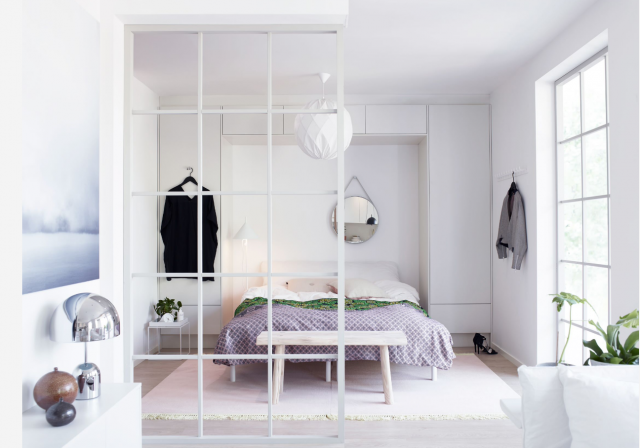
Original article written by Houzz
With just a few little tricks and the right choice of furniture, even a small bedroom can be nice to look at and, above all, give the impression of having a few more square feet than it actually does. Our collaborator Houzz gives some useful advice on decorating a small bedroom.
Uniformity without monotony
One good way of making the space seem larger is to create uniformity. With uniformity or continuity, we are not only referring to the colour of the walls, but also to the chromatic scale of the whole room, with special attention on the furniture.
Soft tones adapt well to anything, but to avoid the flattening of surfaces, we can combine colours that go up or down in tone. Neutral colours are the most suitable for our purpose, because they create spatial continuity and increase the perception of the real limits of space. In this way, the bedroom will become a fluid and welcoming environment.
A helpful tip is to put a generously sized photo or image on the bedside table. Putting in art, both in agreement with and in contrast to the colour scale of the room, creates a focal point that pushes our gaze even further, adding a touch of charm to the room.
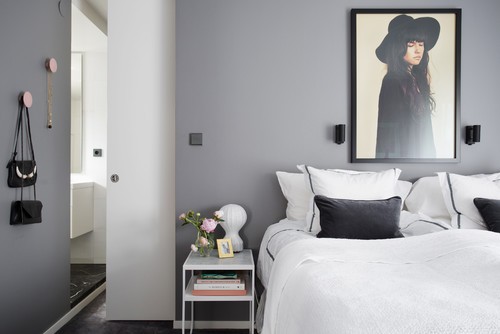
Make use of artificial light
Light is always a valuable ally if we want people to perceive a space as larger than it really is. Try to make good use of it in the bedroom, although in this environment we don’t need much light. Illuminating just one wall will visually expand the surface of the room. A good suggestion is depicted in the picture below, where a sheet of ceiling light bathes the wall behind the bed. In this case, the light is ideal for enhancing the irregular texture of the brick wall.
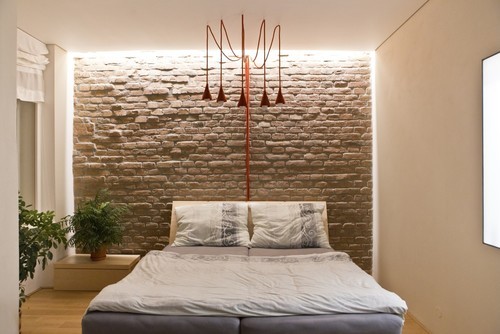
Natural light and coloured curtains
While artificial light is important, we should not underestimate the help we can get from natural light. If we’re lucky enough to have a well-oriented bedroom with a large window, it will be enough to let in as much light as possible.
This is sufficient to transform our small environment into a comfortable and cosy room. The curtains should also be chosen carefully, being light and clear and, above all, a colour that matches the wall to accentuate the continuity of the surfaces.
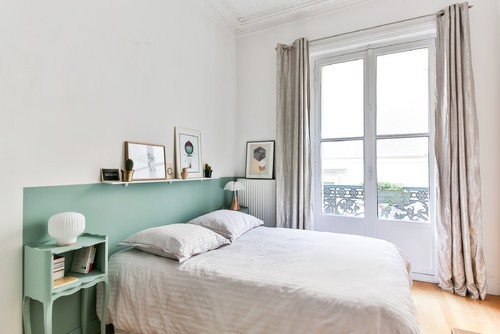
Order areas with different functions
If you have a small floor area, every inch should be designed to perform a specific function. This is even more true for a small bedroom in which you will need to avoid the feeling of clutter and confusion. An orderly environment will look both more comfortable and larger.
Our advice is to identify the small surfaces where the furniture will be, a stretch of wall to place light shelves for books or photos, or a corner for a small armchair or stool. The most important thing is that each of the spaces is carefully thought out, well-organised and that there are empty areas between one area and another for the eyes to rest.
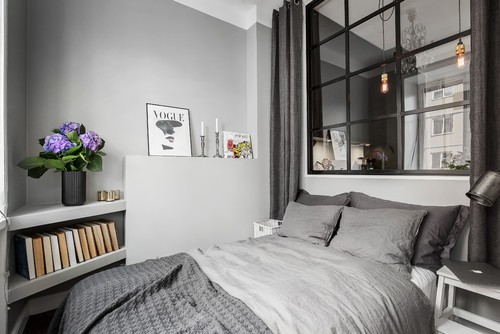
Looking upwards
The same principle seen in the above photograph can be applied in different ways. It is about inducing the eye to move away from the area of the bed to a different focal point, allowing it to take in a wider environment. In the image below, for example, the use of colour on the facing wall has the dual purpose of customising the otherwise flat environment and moving the focus upward, increasing the height of the room.
This photo also suggests another trick: take a look at the bedside tables. The use of minimalist furniture in terms of dimensions and lines illuminates the room and makes it look wider.
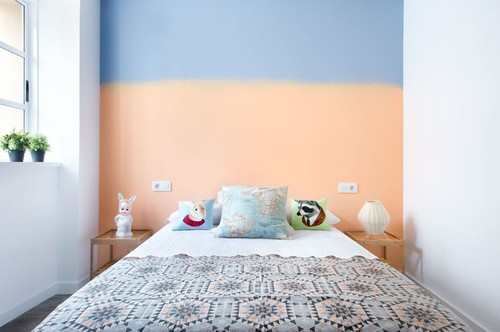
Separation with glass
In a small flat, the tendency is to create unique, communicative and fluid spaces. To achieve this, dividing walls are taken out. However, environments such as the bedroom also require privacy. The dilemma is solved in a winning way by creating stained glass windows that project the room directly onto the living room. In this way the bedroom will look bigger and airier and the same effect will be obtained in the neighbouring room. All you have to do is insert an opaque curtain to restore the privacy of your bedroom.
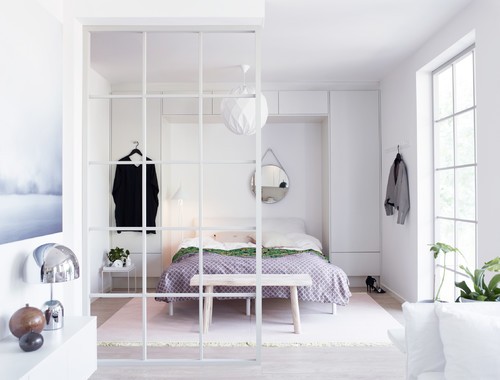
Enlarge with mirrors
The decorative virtues of mirrors have been known since the 18th century, when the most prominent families competed to have boudoirs or even rooms with walls full of mirrors. Over time, the mirror has kept its charm intact due to its ability to reflect its surroundings. This feature makes it incredibly useful when you want to fool the eye and make a room look bigger.
A large mirror reflects the light and the walls in front of it, creating the pleasant illusion of more generous surfaces. In the example in the photo, the entire wall is covered, with the result of doubling the perceived space and seeing the sea, beyond the balcony, lying comfortably on the bed.
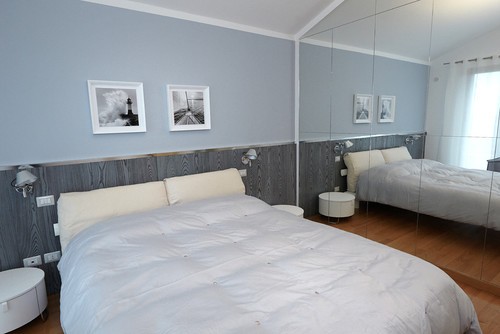
Insert something huge
To make a small bedroom look bigger, we have to use "clever" furniture. One way is to opt for minimalist furniture with the positive impact of a painting or painting, but we also achieve the perception of a wider environment by giving it an element of accentuation. It may seem to go against common sense, but if we include a large piece of furniture in the room (even better if it is lighter than the oversized chandelier in the photo!), it creates a focal point that will attract the gaze beyond the area of the bed and give a touch of drama to the whole environment.
